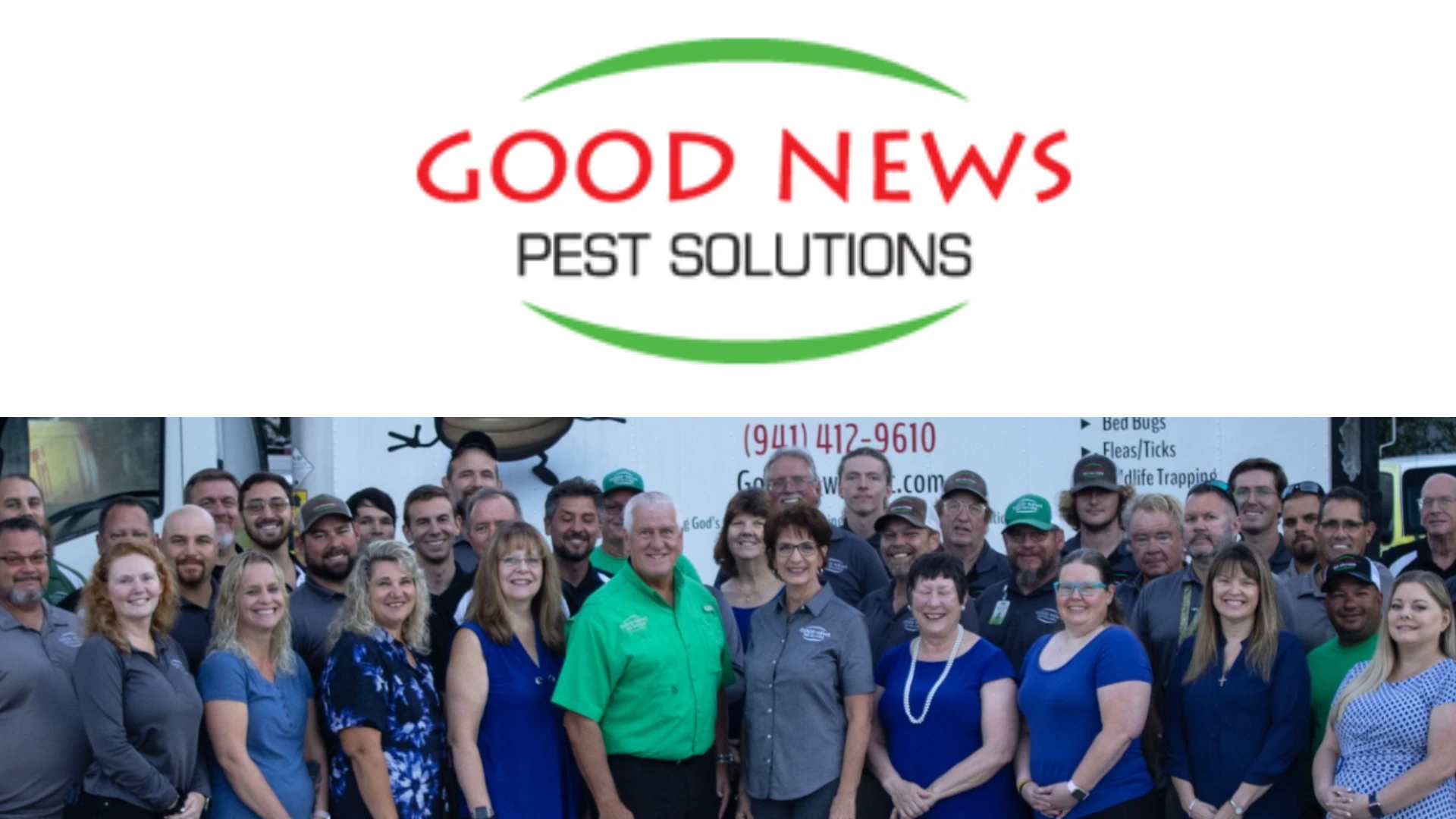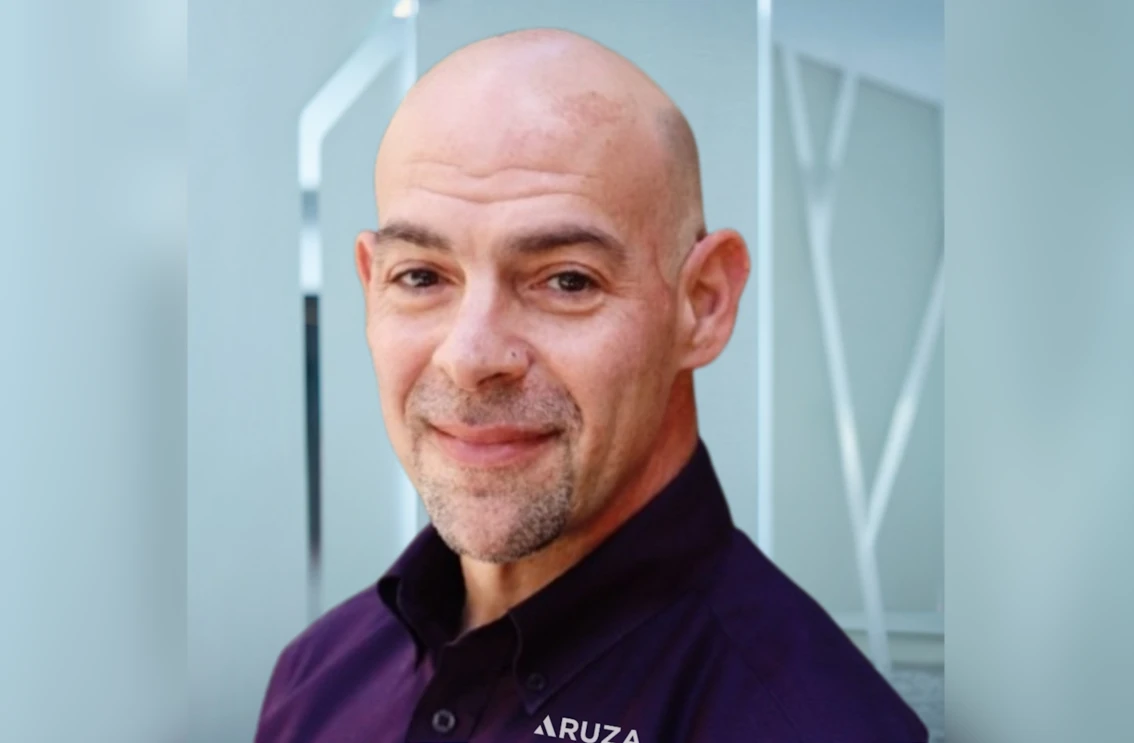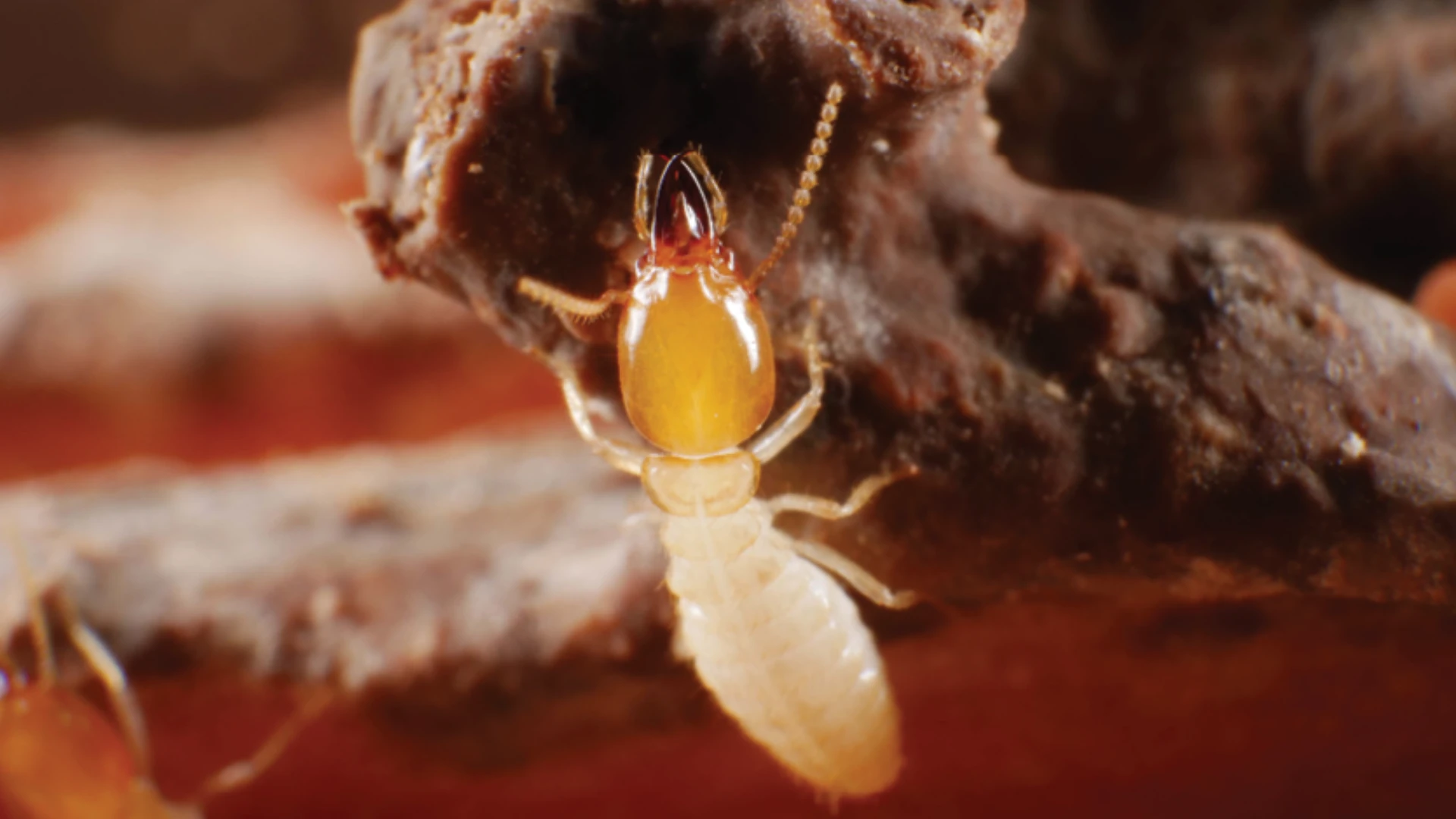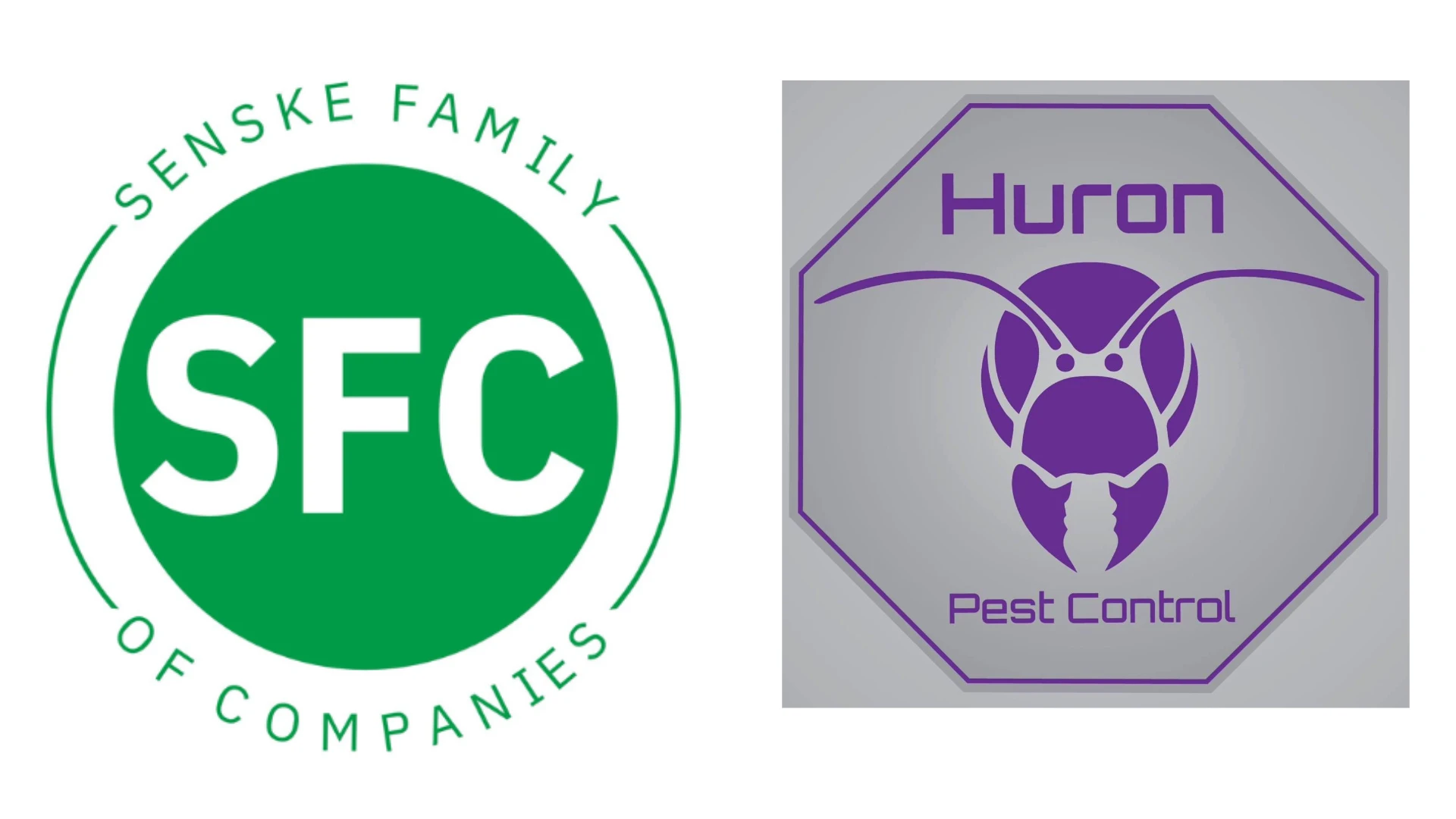|
|
How do you change such deep-rooted feelings? How do you convince people that this time, you’re going to do it right? You do exactly what PPMA board members and its executive director have been doing for almost a year now. You hit the road promoting your agenda. You produce tangible results. You attempt to fulfill many of those promises that were made years ago. And you answer those lingering questions that some still may have about the program.
Under the leadership of Executive Director Cindy Mannes, who has deep relationships at all levels of the structural pest control industry, PPMA is back on its feet. “We are right on the mark,” said incoming National Pest Management Association (NPMA) President Bobby Jenkins. “If you lined it out from day one to today and if you had said today that we would be where we are today, everybody would be happy about that. It’s a process.”
It’s a process that started in 1997.
FROM THE BEGINNING. The dream of an Industry Awareness Council with the mandate to produce a national ad campaign promoting the benefits of structural pest control remained just a dream until Keelan Pulliam of Zeneca Professional Products (now Syngenta Professional Products) picked up the mantle of leadership and resuscitated the concept at 1997’s Business Strategies 2000 Conference, co-sponsored by Zeneca and PCT magazine. At that meeting, a variety of stakeholders in the industry agreed that growing the market for professional pest control services would require a broad-based public relations campaign.
“There were a number of people who said we need to do something over and beyond the NPMA, and all agreed on a public relations initiative,” said Harvey Massey, one of the more prominent PCOs at the meeting. Later that year, several pest control operators (including Massey), manufacturers, distributors and others met to brainstorm more about the idea. “They discussed what they were thinking, why they thought this sort of issue was important for the industry and all of us really agreed that we needed to do something. From that, it took shape,” Massey said.
|
|
To Rob Lederer and NPMA’s credit, the association (including then-NPCA President Larry Treleven of Sprague Pest Solutions) took immediate steps to establish the IAC. From the start, NPMA and Lederer, who was relatively new to the association, were instrumental in IAC’s success. “The strength of the IAC/PPMA has always been in the supporting leadership structure and the support of NPMA,” Lederer said.
For example, NPMA had the foresight when establishing IAC to make it a separate entity from NPMA. Although NPMA and IAC/PPMA were (and still are) affiliated, the program was incorporated as its own freestanding organization that year with its own board of directors and its own bank account. “But early on, and even today, the program wouldn’t have survived without NPMA’s support,” Mannes said.
IAC’s mission, according to early promotional materials, was to gather a group of PCOs, distributors and manufacturers who would “join forces to create a marketing campaign designed to grow the base of the industry and to put out positive messages about the benefits of professional pest control services.”
So with NPMA’s support, and IAC Chairman Harvey Massey at the helm, IAC took its first steps. Shandwick Public Relations, a well-known PR and advertising agency in Washington, D.C., was brought in to consult with IAC. Big plans (and big claims) followed. In 1999, Shand-wick USA CEO Michael Petruzzello said, “It’s entirely possible that a fully funded, three-year program of public relations and advertising can grow the overall industry by 21 percent, or as much as $1 billion. There’s not nearly the negative baggage some other industries have had to overcome and there’s a segment of ‘do-it-yourselfers’ out there who are ready to be converted to customers of qualified PCOs.”
In hindsight, as the agency that put together the familiar “A rising tide lifts all boats” program, Shandwick promised too much too soon.
“Shandwick’s presentation to us was first class,” Massey said. “They did some excellent research for us and we learned a great deal from that, but we created a public relations plan and a grandiose plan of advertising that we couldn’t afford.”
A national TV advertising campaign was the most promoted (and popular) way Shandwick representatives said they would grow the industry’s overall revenues so dramatically (see Got Milk? story on page 40). But there were also lesser-known aspects to the program. Shand-wick’s approach had many levels, the first of which was extensive market research. Before public relations could be done and before ads would appear on national television, research had to be done to determine what consumers knew about the pest control market. But that wasn’t what most people were interested in. Most PCOs only heard “TV commercials” and “Got Milk?” “No one really heard all that stuff in the middle,” Mannes said.
“The marketing research and that background info is just so critical to the success of the program but the problem is it’s not real sexy,” Bobby Jenkins said.
So the research was done and IAC discovered some interesting information about public perceptions relating to the pest management industry. Probably the most interesting finding was that there was a lack of perception. “For the most part, homeowners didn’t have a negative perception,” said Brad Chalk, a longtime chemical company executive now with Zoecon Professional Products. “They didn’t have any perception at all.”
EARLY PR SUCCESS. PPMA wanted to change its market perception too. In September 1999, the board of directors changed IAC’s name to the Professional Pest Management Alliance to be in concert with NPMA (which had just become the National Pest Management Association) and to allow the organization to be broader based in its fundraising approach.
With a new name and research in hand, the public relations portion of the industry awareness campaign was set in motion. PPMA experienced early success when, under the direction of Executive Director Steve Kramer (who had worked with PPMA while an ac-count executive with Shandwick), PPMA made a five-minute appearance on NBC’s Today Show. Two months in the making, the appearance by then NPMA Technical Director Greg Baumann discussed the need for homeowners to use pest control professionals instead of trying to control pests themselves.
The spot was a coup for PPMA and industry reaction was overwhelmingly positive. And the Today Show, watched daily by more than 6 million viewers, provided a great spring-time audience for NPMA. “This represents a major home run for the PPMA program and its value to the industry,” Lederer said at the time. “The advertising equivalency of a four- to five-minute segment on a national news program is worth millions of dollars.”
But almost immediately following the Today Show appearance, and after less than a year as PPMA’s executive director, Kramer left the organization, although he continued to serve as a PR consultant for the association for some time thereafter.
Once again, NPMA lent a helping hand to PPMA and Lederer held the program together until a new executive director was hired. In October 2000, Catherine Imus was named PPMA’s new executive director. Imus brought nearly 20 years of PR and media experience to PPMA. Previously, she worked for the North American Insulation Manufacturers Association (NAIMA), an association that represents the fiberglass insulation industry.
But Imus was only at PPMA for about a year. And more turnover meant new learning curves and more disappointed PCOs, resulting in a growing perception that PPMA was drifting from its original mission. “Because of lack of funding, and personnel,” Mannes said, “some of the exe-cution didn’t happen in a timely manner.”
But bigger problems were afoot.
SHOW ME THE MONEY. Not only were there management-level turnover problems, but PPMA was suffering from a lack of support — both financial and emotional. There was trouble collecting the money, expectations that were unattainable and stakeholders that didn’t support the program.
“I think they set some unrealistic expectations initially,” says one prominent PCO who requested anonymity. “They set ridiculous expectations and then anything less than that comes off as a disappointment. I think you have to start small and build up to something and then build momentum.”
The biggest problem was funding PPMA. Although many thought the money should be collected at the manufacturer level, that wasn’t even an option. “For manufacturers to unilaterally agree to incorporate or to raise prices to pay for the PPMA is called a horizontal agreement and is a violation of the Sherman Antitrust Act,” Mannes said. “Unlike government-subsidized programs, we are a service industry and cannot unilaterally collect money.” So after lengthy discussions it was decided that distributors would collect the money and send it to PPMA.
“The PPMA decided to use distribution as a gatekeeper by putting a voluntary charge on the invoice. Vopak didn’t really care which way it was done as long as it would be successful,” said John Bolanos, vice president of Professional Products & Services for Vopak. “We have always maintained that if the industry grew then every manufacturer, every distributor and every pest control operator would benefit. Other distributors indicated it would become a problem for them to implement for administrative or conceptual reasons. It was a divisive issue and became somewhat ugly. A lot of bad will was generated over the collection issue.”
“I 100 percent think it should be voluntary and I don’t think distributors should have to collect it,” said one prominent distributor who didn’t want to be named.
Other distributors agreed with those sentiments and were opposed to the program for many reasons. Some didn’t think their accounting systems were capable of tracking PPMA’s money into a separate account. Others were fearful that there could be negative tax implications and thought the program would hurt their bottom line. Others simply had a philosophical opposition to the program. “That’s not what a distributor should be doing,” one said. They felt it was NPMA’s responsibility or that PPMA should bill PCOs directly.
But despite the unrest in the distributor community, those distributors involved in the program began collecting contributions in the form of a voluntary 2.5 percent line item surcharge on material and supply invoices beginning May 1, 1999.
“If my material and supply expenses are running 8 percent of my total revenues, 2.5 percent of material and supply expenses equals two-tenths of 1 percent of my revenues,” Massey said. “It’s fractional. It’s a very, very small investment.”
But even though some pest management professionals felt the 2.5 percent surcharge was a small investment, others disagreed.
“I did not like the way they were talking about contributions as a percentage of your chemical purchase. I don’t contribute to any meaningful thing based on a percentage of the business,” said Kevin Kordek, president, A-Active Termite & Pest Control Company, Virginia Beach, Va. “We have to budget a certain amount. I was opposed to contributing based on chemical sales because it was an unknown figure. It’s easier for me to make a contribution to an organization like PPMA or pay my dues to NPMA and state or local associations based on a fixed dollar amount.
“I had a fixed number in my mind that I was willing to contribute but not to exceed that amount,” Kordek added.
Many knew that having distributors collect the money was going to be difficult but that somebody had to do it if the industry wanted to continue to grow and to counter the ever-growing anti-pesticide lobby. “There’s been a little bit of push/pull involved because somebody has to hold the money,” said Tom Fortson, PPMA’s incoming chairman and president of Terminix Service Inc., Columbia, S.C. “I think there has been some reticence, ‘If I get saddled with the monkey then I’m going to have all the work to do.’ No one particularly wants to do it and I can understand that. The fact is we’ve got to come up with a better way to do it.”
But money wasn’t the only problem. Many in the industry felt they had seen few results (except for the Today Show appearance) and that created some uneasiness about the effectiveness of the program. “Even when it comes to religion, people don’t just contribute on faith,” Bobby Jenkins said. “You have to see something, touch something, feel it.”‘
|
Got Milk? |
|
Although initially it was thought by many in the pest control industry that PPMA was going to produce an advertising campaign similar to the “Got Milk?” initiative, that was never the plan. “The ‘Got Milk?’ campaign was the vehicle IAC used to explain to the industry the type of program we’d like promote,” Mannes said. “It wasn’t necessarily the mechanism to support it. ‘Got Milk?’ was something that people understood.” The pest control industry could never participate in a program such as “Got Milk?” Why? Because the funds the milk public relations initiative collected is done via a government-approved “checkoff program.” Only commodities (like beef, pork and milk) can participate in a checkoff program. Such programs allow manufacturers of commodity products to promote and grow their industry. “The IAC program was initially developed and modeled after programs such as this but it still needed to be a voluntary contribution,” Mannes said. “You cannot force a person to be a philanthropist.” The Cattlemen’s Beef Promotion and Research Board, which runs a checkoff program similar to the “Got Milk?” initiative, was established as part of the 1985 Farm Bill. The checkoff assesses $1 per head on the sale of live domestic and imported cattle, in addition to a comparable assessment on imported beef and beef products. The assessment became mandatory when 79 percent of producers approved it in a 1988 national referendum vote. State beef councils collect the checkoff and retain up to 50 cents on the dollar. State councils forward the other 50 cents to the Cattlemen’s Beef Promotion and Research Board, which oversees the national checkoff program. Visit www.beefboard.org for more information about checkoff programs. |
Kordek agreed. “Some companies have been giving thousands of dollars a year. That’s a lot of money,” he said. “If I were spending $3,000 or $4,000 on an advertising campaign for my company and I saw zero returns, I’m not going to do that again.”
But even with the downsides, many dedicated PCOs, manufacturers and distributors continued to contribute to the program.
“I was a little disappointed and disillusioned about the results PPMA was obtaining in the early stages of its formation,” said Edward Bradbury, a prominent member of NPMA and president of Viking Termite & Pest Control, Bound Brook, N.J. “All the money that was going to promote PPMA seemed to get little results for the effort to help our industry. Viking supported NPMA in its efforts from the beginning, knowing if this could work it would greatly benefit PCOs everywhere.”
Zoecon’s Brad Chalk said that from the beginning, he thought it was a worthwhile campaign and one that any manufacturer should support. “I think it’s important that everybody who benefits from this industry support the industry and its growth. Media, manufacturers, service companies, distribution and everyone allied with the industry should be interested in helping this industry grow,” he said. “We have a very good story to tell and as a proponent of the good that the industry does, we should all help get the story out.”
A NEW DAY. In October 2001, Cindy Mannes was brought in to “get the story out” and industry leaders have been praising the move ever since. An industry executive with 14 years experience in pest control, she was the former communications manager for Aventis Environmental Science who built a strong relationship with the PCO, manufacturer and distributor communities as the communications committee chairperson for RISE (Responsible Industry for a Sound Environment). RISE is the not-for-profit association representing the manufacturers, formulators, distributors involved with pesticide products used in pest control and turf and ornamental management.
“Not only does Cindy Mannes have a strong background in the PR side of the equation, she also is passionate about the industry,” Lederer said.
“Cindy brings passion and commitment and energy. That is the ingredient that we really need the most,” Jenkins said. “She’s very capable and she’s got experience. She knows the industry, the manufacturers, distribution and all the players. She already has credibility with these people.”
And since she knew the industry, Mannes knew what would work and what would not work. She understood that there had to be a better way for PPMA to collect funds. “We need to come up with a sustainable way to raise the money,” she said. “Distribution was willing to do it but it took a lot of work. But the industry chose not to accept it.”
Currently, PPMA uses a pledge card system. PCOs make a yearly pledge to PPMA and send payments in monthly, quarterly or annually. There are no percentage requirements although there is a “Guardian Program” of which about 60 companies are members. Those companies donate one-tenth of 1 percent of their annual revenues to PPMA. “The pledge card system appears to be something the industry will support,” she said.
PPMA’s budget now is much more realistic considering the overall size of the pest control market — the goal is $1.1 million this year, Mannes said. She’d like it to grow even more, however. PPMA’s goal for 2003 is a budget of $1.5 to $1.7 million and up to $3 million in 2004.
With that money, Mannes orchestrated the first-ever national TV ad campaign relaying the benefits of pest control to consumers. The goal of the 30-second spot was to build increased awareness of the value of the pest management industry, position pest management professionals in a positive light and increase the industry’s customer base. The commercials ran on CNN, HGTV and CNN Headline News from April 15 through May 13. The ads ran on cable because that was the best way to reach PPMA’s target audience. “The national cable buy specifically targeted 35- to 55-year-old women who were homeowners,” Mannes said. A secondary audience, men, was reached by the ads on Headline News.
“I know the amount of money that’s in that budget for media and it’s minuscule,” Tom Fortson said. “We’re getting extreme value for our dollar right now.”
In addition, public service announcements (PSAs) will appear in the coming months. Public service announcements are consumer education spots that can only be run by non-profit organizations, such as PPMA. Some well known PSAs are the anti-drug, anti-smoking and seat belt spots that frequently run on TV. “I think PPMA’s PSA campaign could blow the doors down,” Mannes said. The spot has been distributed to more than 400 markets for TV and more than 500 markets for radio and is scheduled to run for up to six months.
THE FUTURE. Although many PCOs are familiar with PPMA and have donated money in the past, there are still some sticking points with some PCOs regarding the program.
Greg Clendenin, president of Middleton Pest Control, Orlando, Fla., is concerned that the program does not have a way to differentiate companies that operate professionally in the industry from companies that do not operate professionally. “The campaign put everyone in the same pot,” he said.
“Whenever this distinguishing factor is in place then I will be more supportive of PPMA. Otherwise, I am somewhat reluctant because there are some people who do not deserve to be in the same pot other companies are in and who do not deserve to be in a situation where there is no differentiation in this marketing campaign. I think that’s a key element.”
But with more than 17,000 pest control companies in the industry across the U.S., it’s unlikely that there would be one single initiative in which everyone would agree. “But in my two years experience of chairing the PPMA initiative, every place I went and at every presentation I made, people saw the need and the wisdom of doing this,” Harvey Massey said. “Personally, I don’t think PPMA suffers from a credibility issue, it’s purely an issue of coming up with the right funding mechanism for the industry.”
Despite a rocky past, many PCOs now recognize that their industry is in a fight for its life. The well-funded opponents of the industry are lobbying for pesticide restrictions and cancellations. The industry continues to lose entire classes of chemicals (see “Technically Speaking,” pg. 94). So what is a company, especially a smaller company, to do?
“Here’s why small companies are crazy not to jump in: You have people like Bobby Jenkins, Harvey Massey, Terminix and Orkin. They have good marketing people and if they’re willing to spend money united as an industry we’re crazy not to jump in,” said Mike Rottler of Rottler Pest Control, St. Louis, Mo. “If I could tap into people like that who are willing to help the entire industry, why shouldn’t I?
“It’s just another bill you pay. Sure, you could do something else with that money but the long-term benefits are there,” he added. “It’s just like other investments in your business. You wouldn’t hesitate to spend $1,000 on a pump, so why not?”
“It’s a new day and the future is bright for the Professional Pest Management Alliance,” Cindy Mannes says. “The industry awareness campaign belongs to the industry and it will be as successful as the industry chooses it to be.”
To that end, as this issue went to press, Mannes told PCT that after meeting with several basic manufacturers, including Dow AgroSciences, Bayer, Aventis, BASF, FMC, Wellmark and Syngenta, all of those approached agreed to support PPMA at the Guardian level, which is one-tenth of 1 percent of their annual revenues. “This is huge,” Mannes said. “These man-ufacturers like the way things are going now and they are going to continue in their leadership positions in supporting PPMA.” Mannes continues to meet with other manufacturers serving the industry to discuss their participation as well.
Mannes says her goal is for the entire pest management industry to donate to PPMA at the Guardian level. “It’s kind of like taking vitamins or exercising – you may not see the benefit quickly but there is going to be a benefit,” Mannes said. “It’s great for the industry.”
The author is editor of PCT magazine. She can be reached at jdorsch@pctonline.com.
|
ONLINE ONLY: View Video Of PPMA’s Commercials And PSAs |
| DUNN LORING, Va. — The Professional Pest Management Alliance (PPMA) has undergone significant changes recently. As part of PPMA’s new direction, the alliance has launched an aggressive marketing blitz. Throughout the months of April and May, PPMA ran a series of advertisements during broadcasts of CNN, CNN Headline News and the Home & Garden Television (HGTV) network. The 30-second spot features a child looking at a series of photographs of his dad. It discusses the dad’s involvement in the child’s daily life; helping with his homework; coaching his soccer team; and transitions to how his dad also helps other people — as a pest management professional. To view PPMA’s television advertisement, CLICK HERE.
In addition to the paid television advertisement, PPMA developed a 30-second public service announcement (PSA) featuring PPMA’s health and safety message.To view PPMA’s public service announcement, CLICK HERE. (To play this video clip you must have REAL Player installed on your system. To download a free version of REAL Player CLICK HERE.) |

Explore the June 2002 Issue
Check out more from this issue and find your next story to read.
Latest from Pest Control Technology
- Webinar: Employee Incentives — Going Beyond the Annual Raise
- Pest Control Companies Helping Neighbors in Need Eradicate Bed Bugs
- Why Does Marketing Feel So Opaque?
- How Did This Pest Get Its Name?
- Rose Pest Solutions Honors Top Performers with Annual Chief’s Club Awards
- Doug Foster on Termite Control Equipment, Resources
- Pest Control Consultants Acquires EcoGuard Pest Control
- Pest Index Increased 9 Percent YOY in February










